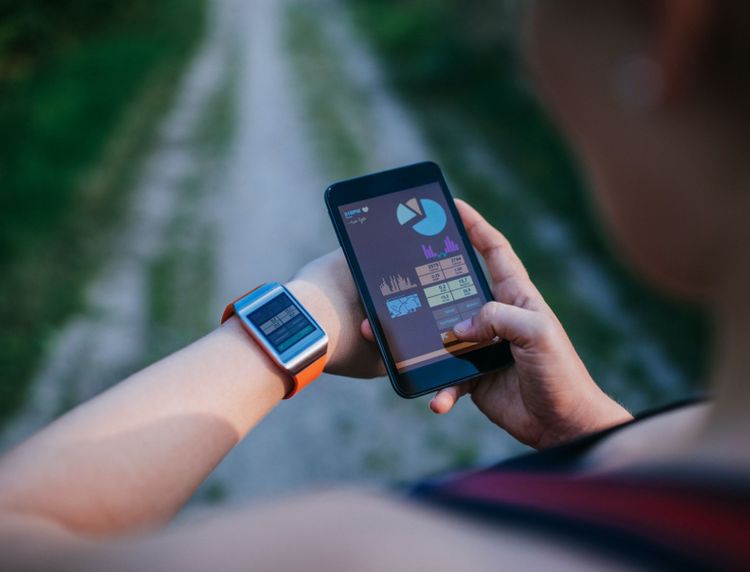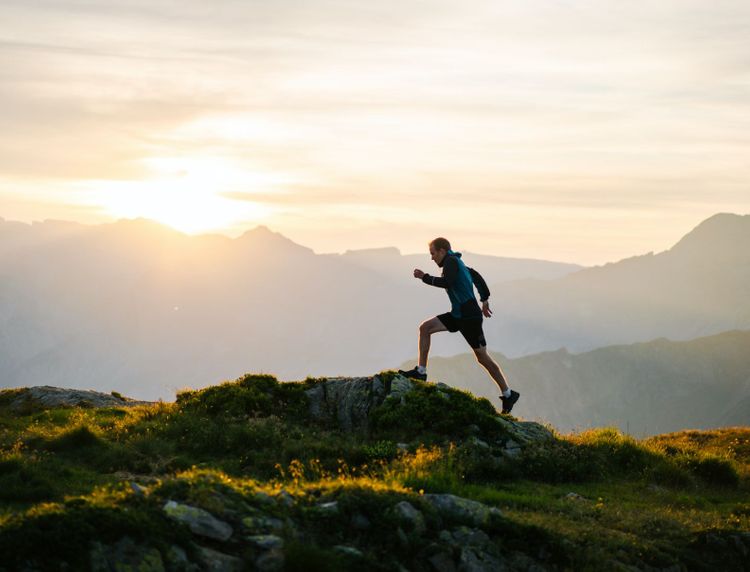Health Benefits of Eka Pada Rajakapotasana (Pigeon Pose)
Have you ever wondered if there is any yoga pose named after animals? If yes, the answer is Eka Pada Rajakapotasana or Pigeon Pose.
Eka Pada Rajakapotasana is a Sanskrit term that translates to One-Legged King Pigeon Pose. It is a great hip opener asana that stretches the thighs, groin, and lower back. This pose requires strength, flexibility, balance, and stability. It is also a pose that invites us to surrender and open our hearts, just like the pigeon bird.
Let’s discuss Pigeon pose yoga in detail.
Share this article
List of Content
- Benefits of Eka Pada Rajakapotasana
- Step-by-Step Instructions of Eka Pada Rajakapotasana
- Precautions to Take Before Practising Eka Pada Rajakapotasana
- Conclusion
- FAQS
Benefits of Eka Pada Rajakapotasana
Here are the Rajakapotasana benefits:
Strengthening the Lower Body Muscles
Eka Pada Rajakapotasana targets the major muscle groups and joints in the lower body, such as the glutes, the hamstrings, the quads, the hip flexors, the adductors, the abductors, the knees, and the ankles.
By practising the pose, you can stretch and lengthen these muscles and joints and increase their range of motion and flexibility. You can also strengthen and tone these muscles, improving their stability and endurance.
Improving Posture
Eka Pada Rajakapotasana affects the pelvis and the spine, two of the most essential structures in the body. The pelvis is the base of the spine, and the spine is the body's core. The pelvis and the spine support the body's weight, protect the vital organs, and allow movement and flexibility in all directions.
By practising the pose, you can improve your posture, flexibility, and mobility in the pelvis and the spine and, thus, improve your overall health and wellness.
Improving posture in these areas can also help prevent and relieve common ailments, such as lower back pain, sciatica, disc herniation, spinal stenosis, scoliosis, and spondylolisthesis.
Alleviating Pain and Stiffness
Pigeon pose benefits by alleviating pain and stiffness in the lower back and sciatica, two of the most common and debilitating conditions affecting millions of people worldwide.
Lower back pain and sciatica are often caused by tightness and inflammation in the muscles, tendons, ligaments, and nerves surrounding the lower back and the sciatic nerve, which crosses through the lower back to the back of the legs.
By practising the pose, you can release and relax these tissues and reduce the pressure and irritation on the lower back and the sciatic nerve.
Stimulating the Abdominal Organs
This pose helps stimulate the abdominal organs and improves digestion and elimination, two of the most essential processes for the health and vitality of the body.
The abdominal organs include the stomach, the liver, the spleen, the pancreas, the gallbladder, the kidneys, the intestines, and the bladder. These organs break down the food you eat, absorb nutrients, and eliminate the waste you don’t need. By practising the pose, we can massage and compress these organs and improve their blood flow and function.
Stimulating the abdominal organs and improving digestion and elimination can help us prevent and treat many digestive disorders, such as indigestion, constipation, diarrhoea, bloating, gas, acid reflux, irritable bowel syndrome, ulcerative colitis, and Crohn’s disease. It can also help us detoxify and cleanse our body and boost our metabolism and immunity.
Opening the Heart and the Third Eye
Practising this asana can boost your creativity and imagination by opening your heart and your third eye. The heart is the centre of our emotions, feelings, and intuition, and the third eye is the centre of our vision, insight, and wisdom.
By opening your heart, you can access your emotions, feelings, and intuition and use them as sources of inspiration and motivation. By opening your third eye, you can access your vision, insight, and wisdom and use them as guides and tools for exploration and expression.
Step-by-Step Instructions of Eka Pada Rajakapotasana
Now that we have learned the yogic philosophy, the chakra activation, and the benefits of Eka Pada Rajakapotasana, let’s learn how to practise it safely and effectively.
Here are the step-by-step instructions on how to perform the pose:
Start in Downward-Facing Dog (Adho Mukha Svanasana) with your hands and feet on the ground and your hips lifted up. Breathe deeply and evenly.
Raise your right leg up and draw it forward, placing your right knee behind your right wrist and your right ankle near your left hand. Your right shin should be parallel to the front edge of your mat or as close as possible. This is the Half Pigeon Pose (Ardha Kapotasana).
Move your left leg back, straightening your knee and pointing your toes. Your left thigh should be on the ground, with the front of your foot facing down. Make sure your hips are level and square to the front of your mat. For extra support, you can place a folded blanket or a block under your right hip.
Breathe in and lift your upper body, elongating your back and stretching your arms overhead. Draw your shoulder blades down and back, and open your chest. Look up or keep your neck neutral. This is the upright version of the One-Legged King Pigeon Pose.
If you want to deepen the pose, you can bend your left knee and reach back with your left hand to hold your left foot or ankle. Bring your left heel closer to your left hip, and press your foot into your hand to create more resistance. You can also reach your right arm back and hold your left foot with both hands or use a strap if you can’t reach it. This is the backbend version of the One-Legged King Pigeon Pose.
If you want to go further, you can lower your torso and rest your forehead on the ground or a block. Extend your arms forward or wrap them around your right shin. This is the forward bend version of the One-Legged King Pigeon Pose.
Continue in this pose for 5 to 10 breaths or longer if you feel comfortable. Be mindful of your breath, your body, and your emotions. Feel the stretch in your hips, thighs, and back, and the opening in your chest and heart.
To release the pose, gently let go of your left foot if you are holding it, and lift your torso up. Place your hands on the ground and tuck your left toes under. Press back to Downward-Facing Dog and shake out your legs. Repeat the pose on the other side, with your left knee behind your left wrist and your right leg extended back.
Precautions to Take Before Practising Eka Pada Rajakapotasana
This pose needs some precautions you need to be aware of before practising it.
Warm up properly before attempting this pose, which involves stretching and twisting the muscles and joints. You can do some preparatory poses, such as Seated Forward Bend, Butterfly Pose, Intense Side Stretch, and Cow Face Pose. These poses will help you loosen your hips, hamstrings, spine, and shoulders.
Avoid overstretching or straining your knees, ankles, or lower back in this pose; if you feel any pain or discomfort, back off or modify the pose. You can use props, such as a blanket, a block, or a strap, to support your body and make the pose more accessible. For example, you can place a blanket under your front hip or a block under your back foot to reduce the intensity of the stretch. You can also use a strap to reach your back foot if you cannot grab it with your hand.
Avoid this pose if you have any injury or inflammation in your knees, ankles, hips, or lower back.
Call your doctor before practising this pose if you are pregnant or have any medical condition that affects your spine or abdomen.
Remember, this pose may not suit everyone, so you should listen to your body and respect your limits.
Conclusion
Eka Pada Rajakapotasana offers many perks. It improves flexibility, improves posture, alleviates pain, and stimulates abdominal organs. It is also beneficial for your heart. However, when practising this pose, take some precautions.
While pigeon pose has many benefits, you should still invest in a health insurance plan. A medical insurance plan covers many chronic diseases. Health insurance pays for OPD, consultation, and pharmacy bills.
To maximise the benefits of health insurance, compare plans and their features before purchasing.
FAQS
What are the benefits of Rajakapotasana?
Rajakapotasana, or King Pigeon pose, is a deep backbend that stretches the entire front of the body, the ankles, thighs, groins, abdomen, chest, and throat. It also strengthens the back muscles, improves posture, stimulates the abdominal organs, and relieves stress and tension.
What is Eka Pada Rajakapotasana's spiritual meaning?
Eka is linked to the Svadhisthana (sacral) chakra, which is responsible for controlling sexual desire and increasing vitality. It also supports digestion and mental well-being.
Is Eka Pada Rajakapotasana suitable for beginners?
Eka Pada Rajakapotasana requires a lot of flexibility. Therefore, beginners should not rush or force themselves to achieve the pose but rather progress gradually and patiently and respect their body’s limits and needs.
How to do Eka Pada Rajakapotasana?
To do Eka Pada Rajakapotasana, start from a downward-facing dog and bring your right knee forward to your right wrist. Slide your left leg back and square your hips. Walk your hands back and lift your chest. Bend your left knee and reach back with your left hand to grab your left foot. Bring your foot closer to your head and extend your right arm up. Hold for a few breaths and then repeat on the other side.
What are the contraindications and precautions for Eka Pada Rajakapotasana?
People with severe back, knee, hip, or ankle injuries should avoid Eka Pada Rajakapotasana. It should also be done with caution by people who have high blood pressure, heart problems, or migraine. Pregnant women should consult their doctor before doing this pose.
Share this article
Latest from our blogs

15 terms you must know before buying health insurance
We have listed all 15 terms a health insurance buyer should ...
Read More
How Much Health Insurance Do You Need?
While more and more people are getting insurance for things ...
Read More
4 simple steps to claim MediClaim in India
Check that all the documents contain required information li...
Read More